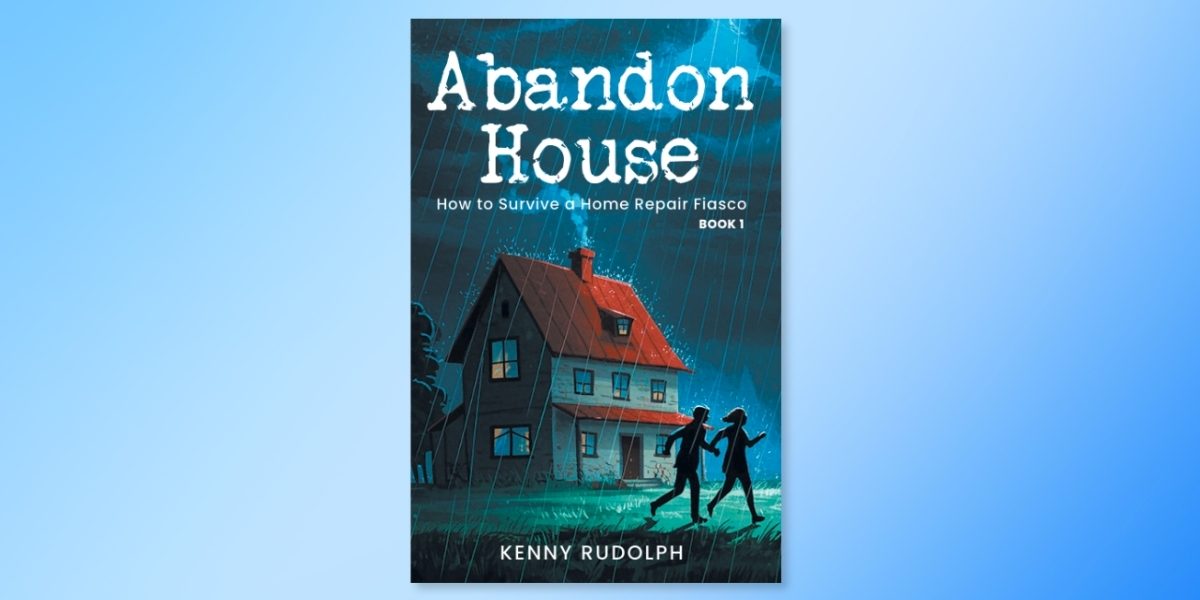By: Elowen Gray
Kenny Rudolph’s Abandon House: How to Survive a Home Repair Fiasco – Book 1 is not a conventional memoir built on quiet reflection or linear storytelling. The first of a three-book series, it functions as a hybrid work that blends humor, social observation, and personal endurance into a narrative that is both chaotic and controlled. What begins as a seemingly insignificant household issue becomes the foundation for a sprawling five-year saga that exposes the fragility of everyday life when bureaucracy, incompetence, and circumstance collide.
Rudolph traces the entire ordeal back to a leaky kitchen window, an inconvenience that any homeowner might expect to resolve in an afternoon or over a weekend. Instead, it becomes the trigger for a full reconstruction of not only the home but the authors’ patience, finances, and worldview. The narrative partnership between Kenny and his wife, Shari, elevates the story beyond a singular perspective. Rather than framing himself as the sole protagonist, he allows their shared voice to shape the telling. The result is richer and more dimensional than a solo account of frustration and dysfunction.
Throughout the memoir, the couple faces a carousel of challenges that range from absurd to infuriating. Fraudulent contractors, disinterested or evasive insurance representatives, opportunistic legal professionals, and the logistical nightmare of managing a home repair crisis during a global pandemic all converge. These obstacles are not presented with bitterness. Instead, Kenny approaches them with sharp humor and self-awareness, fully acknowledging the ridiculousness of the situation without dismissing the emotional toll it takes on them.
One of the standout strengths of the memoir is its tone. The writing feels conversational without sacrificing clarity or structure. Kenny has a natural storytelling instinct shaped by his background in media and creative work. He uses humor not as a gimmick but as a survival mechanism that allows readers to stay engaged through the chaos. The wit is never cynical, and the comedic beats land because they are rooted in honest disbelief at how bad things can get when systems fail.
Shari’s influence is equally important. Rather than existing in the background, she becomes an essential counterbalance, bringing empathy, warmth, and realism to the narrative. Their dynamic offers more than comic relief. It frames the experience as a joint test of resilience, reinforcing the theme that crises rarely occur in isolation. They happen to families and couples who must negotiate not only the external problem but the internal strain that accompanies it.
What sets Abandon House apart from memoirs that rely on spectacle or trauma is its accessibility. Nearly anyone who has dealt with home maintenance, city permits, complicated insurance claims, or unresponsive contractors will recognize parts of their own frustration in this story. Yet it is not simply a story of misfortune. It becomes a lens through which modern adulthood is examined. The house is the tangible setting, but the real subject is what happens when ordinary people are pulled into systems designed to slow them down rather than help them recover.
Kenny writes with enough specificity to make the events believable but avoids bogging the reader down with technical jargon or procedural minutiae. The bureaucratic obstacles are described with precision and comedic restraint. Instead of painting himself as a hero battling villains, he allows the circumstances to speak for themselves. This restraint is part of what gives the memoir its credibility. Readers do not feel manipulated or guided toward outrage. They are invited to witness a situation that spiraled beyond logic.
The emotional undercurrent of the memoir is handled with equal care and sensitivity. While the tone is often humorous, there is an ever-present awareness of how destabilizing it can be to feel powerless in one’s own home. The house is supposed to be a place of safety, order, and rest. When that collapses, identity and security are also shaken. Through small but meaningful reflections, Kenny explores how stress accumulates and how uncertainty can gradually wear people down.
The pandemic adds another layer of difficulty without becoming the central narrative. Instead, it functions as a backdrop that amplifies the absurdity of trying to navigate institutional systems during a time when everything was already on edge. The memoir never becomes political or overly sentimental about COVID-19. It uses the pandemic to highlight the tension between personal needs and societal disruption.
By the conclusion of Book 1, readers are not given a glossy resolution tied up with positivity or inspirational messaging. This memoir conveys a sense of triumph, as the couple endured, adapted, and found a way to laugh through it. Their resilience is not presented as exceptional or heroic. It is portrayed as the only viable choice for people who refuse to be defined by setbacks. And with two books remaining to complete the tale, readers will find themselves cheering for more, as Rudolph overcomes the unimaginable in their attempts to abandon the house.
The expansion of the story into The Abandon House Podcast demonstrates that the material is not limited to the written page. Hearing Kenny and Shari speak about their experiences adds another dimension to their storytelling. Their chemistry and shared storytelling rhythm lend authenticity to the memoir. It also allows the audience to stay connected to their journey beyond the confines of the three-book series.
In the end, Abandon House is not only about bad luck and bureaucratic failure. It is about how people survive disruption with humor and perspective intact. It is about the way relationships absorb stress and come out the other side with new stories and a deeper connection. Kenny Rudolph has turned a personal fiasco into something that is both laugh-out-loud funny and reflective. The memoir succeeds because it is unpretentious, emotionally grounded, and honest about how strange real life can become when something small goes wrong and nothing goes as planned.

















